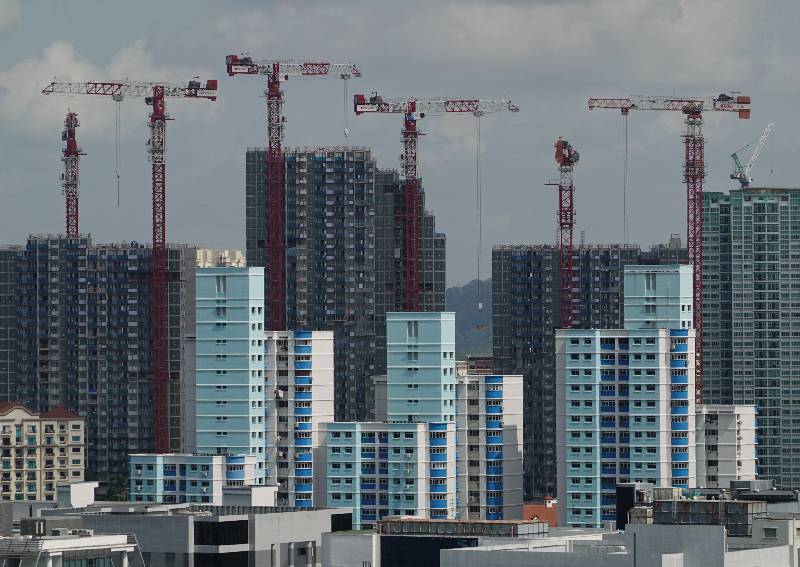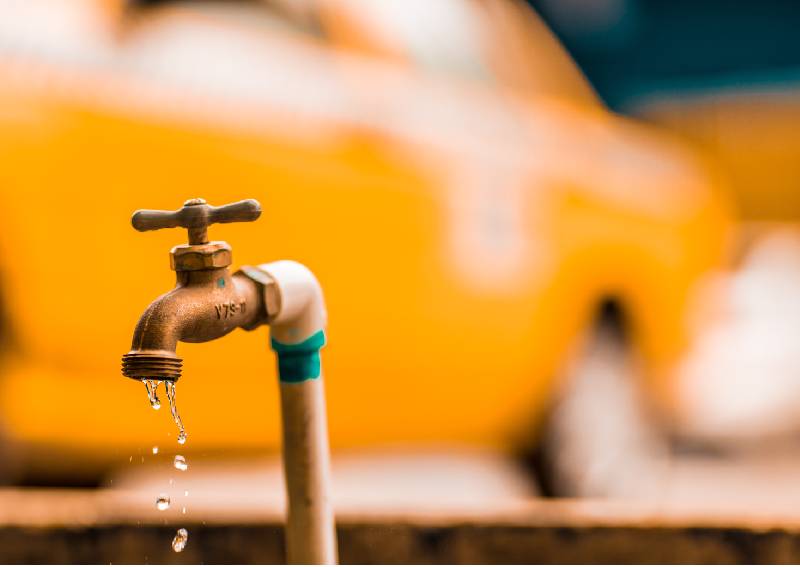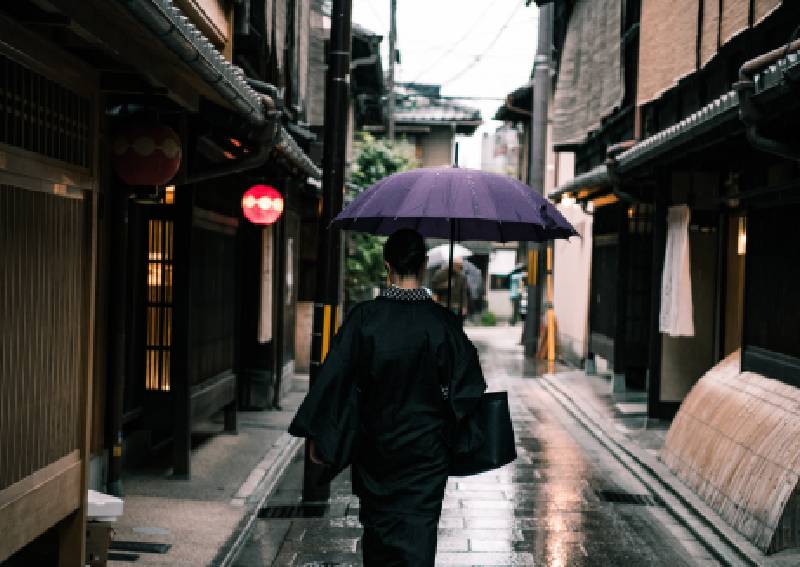If you happen to glance up and notice your ceiling paint is blistering or peeling, spots of discoloration, or dripping dripping water (a dead sign), you most likely have a ceiling leak that needs repairing.
What Causes Ceiling Leaks and Water Infiltration?
ceiling leaking
The most common cause of ceiling leaks is water leaking from the unit above through the concrete floor slab and into the basement ceiling.
Wear and tear of the waterproofing and screed in the floor slab is usually to blame.
If you live on the top floor and are noticing ceiling leaks, it is likely due to wear and tear on the roofing material on top of your HDB block.
Heavy rain
Water runoff can also occur during and after a rainy season with heavy rainfall, which usually occurs during the monsoon season between November and January.
Residents grappled with the issue in early 2021, when Singapore experienced a sustained period of heavy downpours that recorded the highest rainfall in the past 39 years.
Tampines GRC MP Baey Yam Keng said it was a common problem made worse by the incessant rain. “Once in a while this will happen in older blocks, but the intensity of the rain this monsoon season has probably made it worse as the blocks’ outer walls are exposed to the sustained rain,” he added.
Water leakage usually occurs in older buildings and wet areas such as toilets and bathrooms where more moisture is found.
Damaged water supply
Another reason is burst or leaking pipes, either due to signs of age or due to improperly carried out renovation work.
Leaks can also occur from worn toilet wax rings. It happens when you flush and water seeps through the wax ring, runs behind the walls and pipes, causing moisture build-up over time.
Who is responsible for the ceiling leaks in HDBs?
Each property has a Defects Liability Period (DLP) during which HDB offers warranty coverage for ceiling leaks, exterior wall seepage and concrete spalling.
| output | warranty period |
| Ceiling leak in toilets/kitchen | 5 years* |
| Water ingress on the outer wall | 5 years |
| Flaking concrete | ten years |
| *The ceiling leak guarantee is void if the floor tiles have been changed or if the waterproofing system has been tampered with. | |
If your unit does not qualify for the DLP, you can contact your local city government for help by submitting a report with photo and video evidence.
The outer walls of the HDB blocks are jointly owned and are the responsibility of the city administration. Therefore, the city administration should carry out regular maintenance and repair work if necessary.
If there is a leak in the ceiling between the upper and lower floors, you and your neighbor must come together and bear the responsibility and expense of arranging the repair work.
A shared responsibility only exists if the leak was caused by wear and tear. If the problem was caused by renovations by the upstairs occupant, they would be liable for 100 percent of the cost of repairing the damage.
HDB has three recommended contractors on their list that you can hire to repair your leaky ceiling.
| Name of the company | interlocutor | Responsible areas |
| EC Builders Pte. GmbH | Mr Kevin Zuo (91268198 / [email protected]) | Region North and West |
| Jacob General Contractor Pte. GmbH. | Mr James Tan (90277206 /[email protected]) | Region East |
| Success Forever Construction & Maintenance Pte. GmbH | Mr Jack Oei (96898822 /67522212 / [email protected]) | Central and South Region |
damage from the apartment
The situation is different, however, if water seeps in from your apartment, for example through defective window frames, broken air conditioning panels or leaky pipes during renovation.
Apartment owners are solely responsible for maintaining the interior of their homes, so you have an obligation to repair the damage yourself with the help of a contractor.
Will HDB help fix my ceiling leak?

In order to make it easier for apartment owners to carry out repairs quickly and inexpensively, HDB offers support as part of the Goodwill Repair Assistance (GRA) program.
According to the HDB, the GRA is intended to “fix wear and tear-related leaks in the floor slab between apartments”.
Under the GRA, HDB will cover 50 percent of the cost of repairs, and the remaining 50 percent will be split equally between the owners of the upper and lower floors.
HDB will engage a contractor to carry out repair work which will include laying a new waterproof membrane on the floor of the upper units and applying a top coat, sealer and paint to the ceiling of the lower unit.
The GRA only covers the costs of repairing the floor panels and not damage to the equipment, such as e.g. B. built-in carpentry, lighting, shower enclosures etc.
In this example, the apartment owner discovered a leak in her kitchen ceiling. After an inspection by HDB, it was determined that the leak was due to a faulty water supply line in their home and therefore could not be covered under GRA.
Therefore, their application for co-funding was rejected.
Think twice about opting out of the home improvement program
The Home Improvement Program (HIP) aims to give older homes some sort of tuning, with fully funded major improvements that include cast iron pipe replacement. This is because the pipes erode over time, which is why they are being replaced with pipes made from unplasticized polyvinyl chloride (PVC).
If the apartment owner decides to reject the modernization for any reason, the HDB will approve the application after an examination. The pipes must be in good condition with no moisture around the underground unit pipe.
However, “residents must sign a pledge to replace the pipe at their own expense if it leaks in the future,” according to HDB.
Due to the disruptions and industry-wide construction worker shortages resulting from the Covid-19 pandemic, the wait time for GRA repair work to be completed has increased from one to two months to approximately three to six months.
Faster, less intrusive methods of repairing ceiling leaks

Minister of State for National Development Muhammad Faisal Ibrahim announced in February 2021 that HDB had identified two new technologies to improve the current method of repairing ceiling leaks – nanotechnology waterproofing and overlaid waterproofing membrane system.
Both of these methods offer faster and less intrusive alternatives for residents who prefer not to hack their toilet tiles and keep the existing finishes.
The nanotechnology impregnation system works by spraying a layer of a colorless, liquid-based solution onto the substrate or tiles. This creates an invisible barrier with a hydrophobic effect that prevents water from seeping through.
The overlay system involves the application of a 2mm to 3mm thick coating of epoxy based waterproof membrane directly to existing tiles, covering any cracks and making the tiles highly resistant to all liquids.
It also imparts a granite or marble-like finish due to the decorative flakes in the membrane.
Impregnation using either method can be completed in a day, as opposed to the three to four days chopping takes. It also eliminates the dust and noise that chopping usually creates.
What happens if I don’t fix the ceiling leak?
Even if you consider the water damage to be minor, you should still nip it in the bud quickly. Failure to do this can result in greater damage over time, making repairs more difficult and costly.
If you leave it and hope the water dries up, you may experience the following problems:
1. Water stains
The first sign of your problems is staining and peeling paint on your walls. You can tell where the greatest water damage is by touching the walls – it feels damp.
Leave it on long enough and you’ll find that the plaster will start to buckle from all the water that’s pooling beneath the surface.
2. smells
A home that’s been hit with long-term water damage has a musty smell that won’t go away no matter how many times you run the laundry or use an air freshener to mask it.
3. Mold and mildew
It can also lead to an infestation of mold and mildew, which will take root in your ceilings and spread to your belongings. Spores from the mold can cause serious health effects if left untreated, such as: B. Skin problems, chest tightness, throat and lung irritation and nasal congestion to name a few.
4. Electrical damage
What happens when you mix water and electricity? Nothing good, that’s for sure. Wires run behind your walls and if the water comes in contact with the circuit it can cause electric shock, electrocution and even fire.
ALSO READ: Ceiling Leaks: What Can I Do?
This article was first published on 99.co.



Comments are closed.